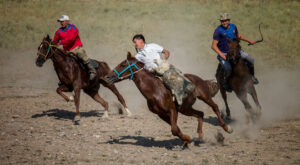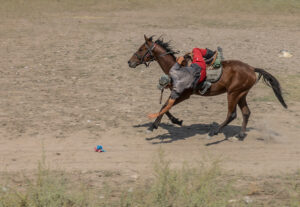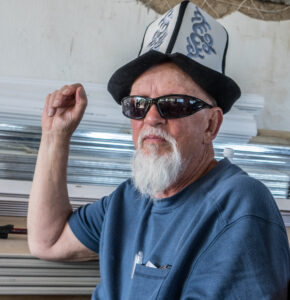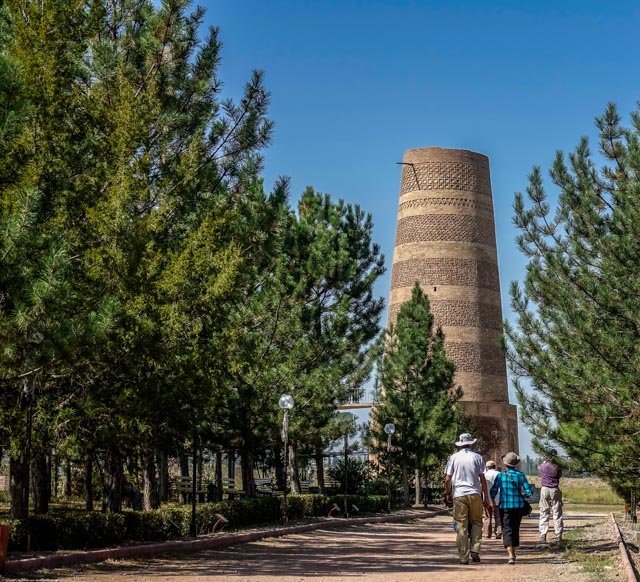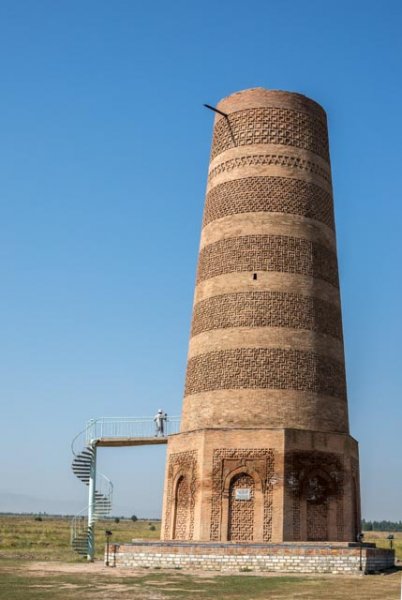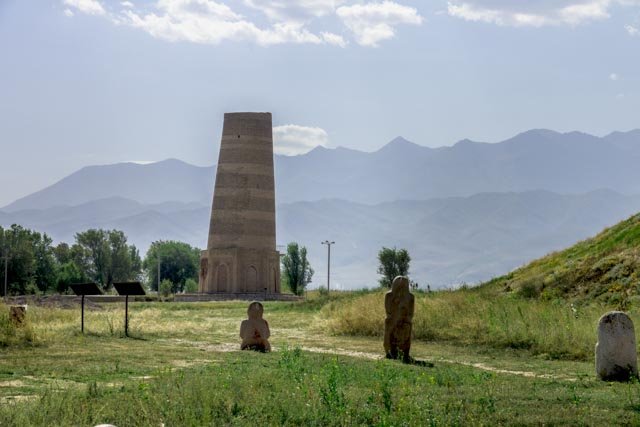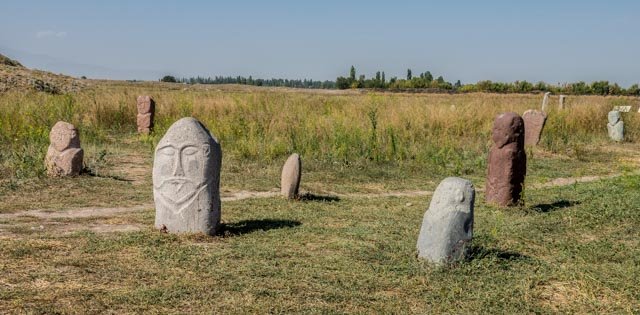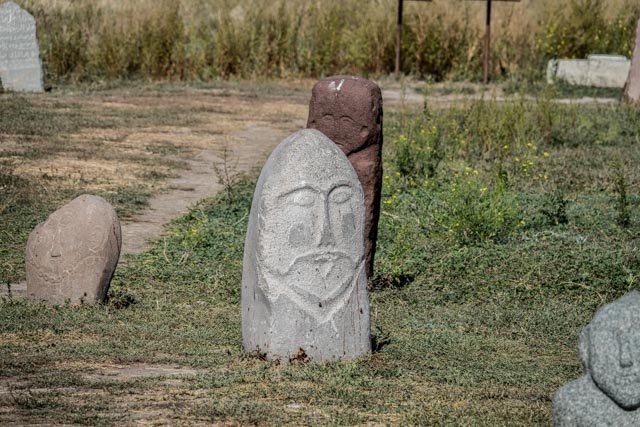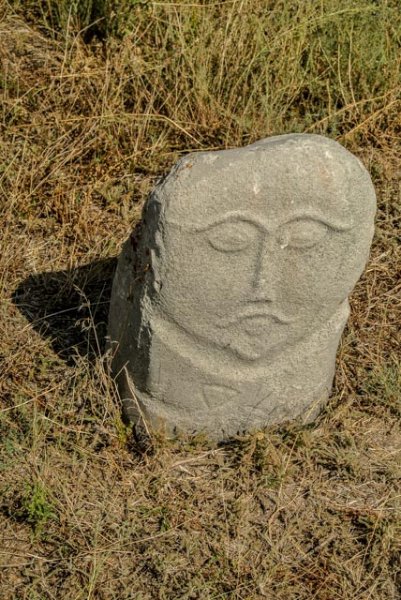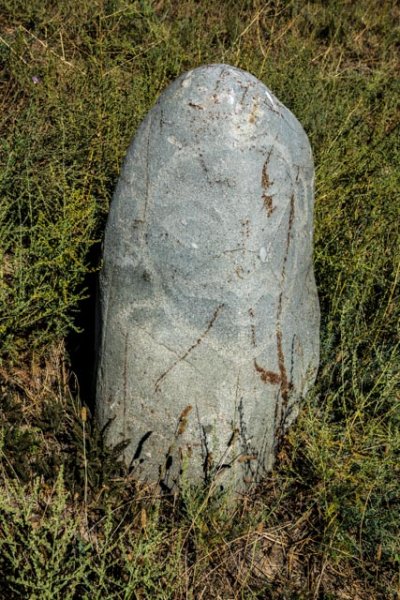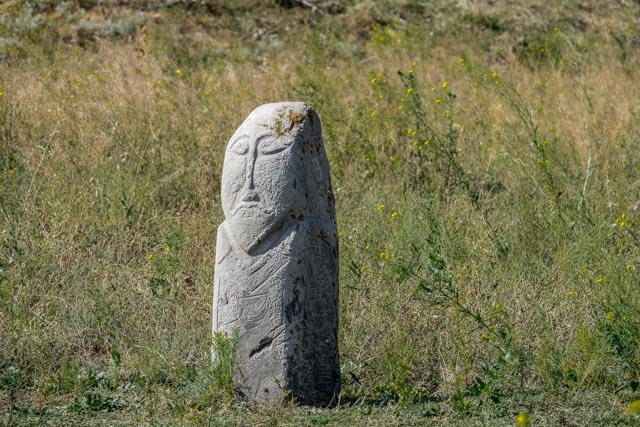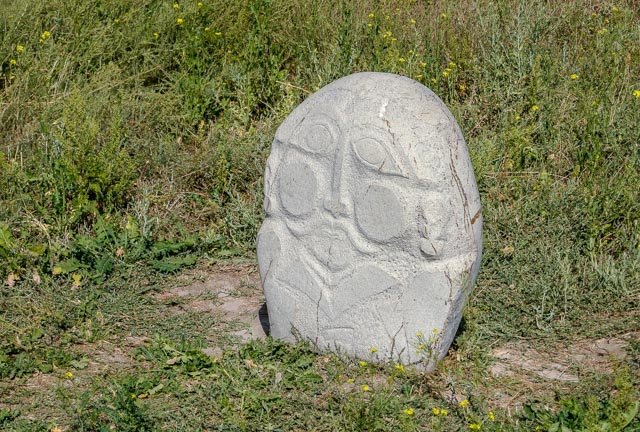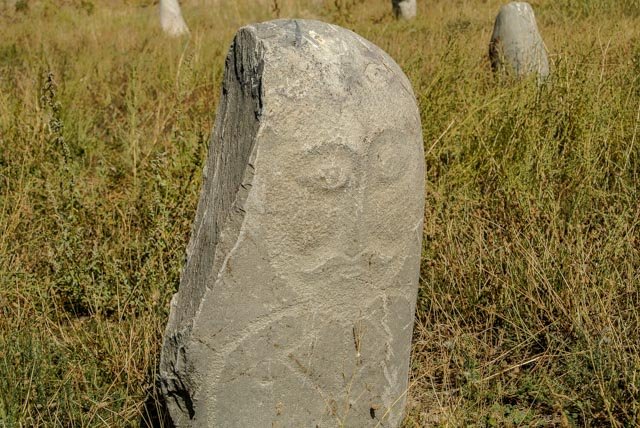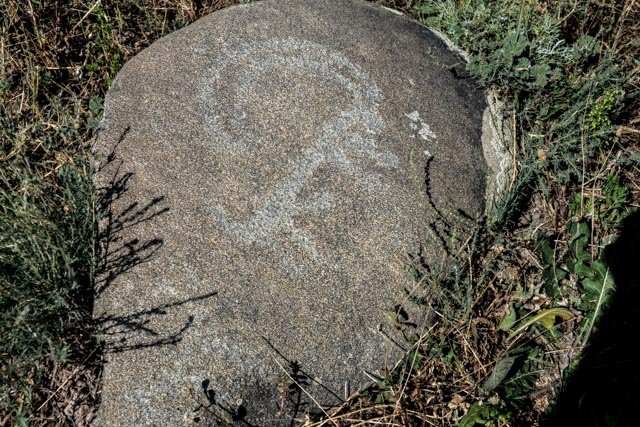Burana Tower and Balbals
The present-day name of the tower – Burana, comes from the Arabic “monar”, minaret. Quite a number of legends are bound up with the history of the construction of the tower. One of them has it that a mighty local khan ordered its construction as a refuge for his only daughter, for a prophet had foretold her death from the bite of a karakurt – a poisonous spider. These insects were in profusion in the area. Despite the father’s efforts to foil the fates, the prophesy came true and the daughter perished from the bite of the spider brought inside the refuge together with black grapes.
The minaret of the archeological site dates to the 10-11th centuries. It is among the oldest constructions of this type in the whole of Central Asia. Its original height was about 45 miters, the upper part of it was adorned with a lantern dome with four doorways looking out the four cardinal points. The present height of the tower is 24,6 m; the upper part of it collapsed during an earthquake that took place about the 15th or 16th centuries.
There were major archaeological surveys of the site in the 1920s, 1950s and 1970s. The archaeologists discovered that the town had a complicated layout covering some 25-30 square kilometers. There were ruins of a central fortress, some handicraft shops, bazaars, four religious buildings, domestic dwellings, a bathhouse, a plot of arable land and a water main (pipes delivering water from a nearby canyon). Two rings of walls surrounded the town. The town was located on the Silk Road.
Now the Burana archeological site has become an open-air historical and architectural museum.
The collection of the museum includes real sculptural masterpieces of the medieval fine arts dating from the 6-10th centuries. Many Petroglyphs from the area are also featured
An interesting highlight of the Open-air Museum are the Balbals (grave markers used by nomadic Turkic peoples who used to roam Central Asia) and Petroglyphs (paintings on stones) which have been collected and placed here from all around the Chu valley.;
Balbals – ancient stone sculptures of Kyrgyzstan. With settling of Turkic tribes on the territory of Kyrgyzstan, appear a new ceremony of burring; in which wildly spread the custom of installation the stone sculptures on the graves. Mostly they made of granite, sometimes from limestone. Also the only flagstones were selected for statues. Sometimes the surfaces were meticulously trimmed, sometimes not.
In its mass the stone sculptures are not the same, scientists distinguish 2 main groups: the 1st group are valued, round sculptures on which clearly traced the proportions of the figures and details: clothes, jewelry, weapon. The 2nd group are flat sculptures, when on the stone the contour line image just a head with the face features, or even rarely the whole figure. The last group is dominated and probably older then the 1st group. Usually the statues represent the Male-stern fighters, rarely female, the faces are mongoloid. In the right hand there is a vessel, on the waist there is a knife or sabre.
Stone sculptures date to 6-10th century and a very few of them to 10-12th centuries. One of the main causes of disappearance was the spread of Islam, as it is known Islam forbid imaginations of alive people, animals, birds.
The stone sculptures were created by skillful sculptors-masons who were the great artists of the time. They could correctly reproduce the proportions of the figure, face features, jewelry. There are also 2 hypothesizes of the purposes these sculptures: the 1st one is what the stone statues represent dead Turks by themselves and the 2nd is what the stone statue is an imagination of an outstanding adversary killed by Turk in the real life, and who has to serve the winner in his next-after death life. Also, in most of the burial places main sculptures were surrounded by a number of smaller rocks that were supposed to represent the number of enemies that person killed during his life so they became his servants in the afterlife.
http://www.kyrgyzstantravel.info/culture/balbals.htm
More Information on the Balbals;
Balbals have two clearly distinct forms: conic and flat, with shaved top. Considering the evidence of Orkhon inscriptions that every balbal represented a certain person, such distinction cannot be by chance. Likely here is marked an important ethnographic attribute, a headdress. The steppe-dwellers up until present wear a conic ‘malahai’, and the Altaians wear flat round hats. The same forms of headdresses are recorded for the 8th century.
The Petroglyphs represent animals such as deer, mountain sheep and wolves as well as sun and person shapes.
Related Images:
